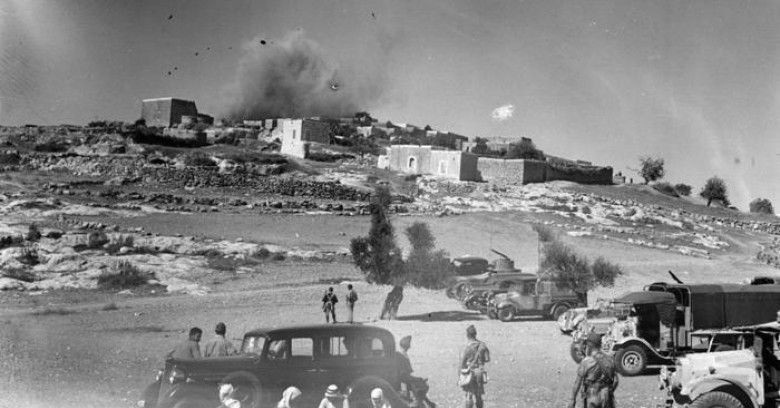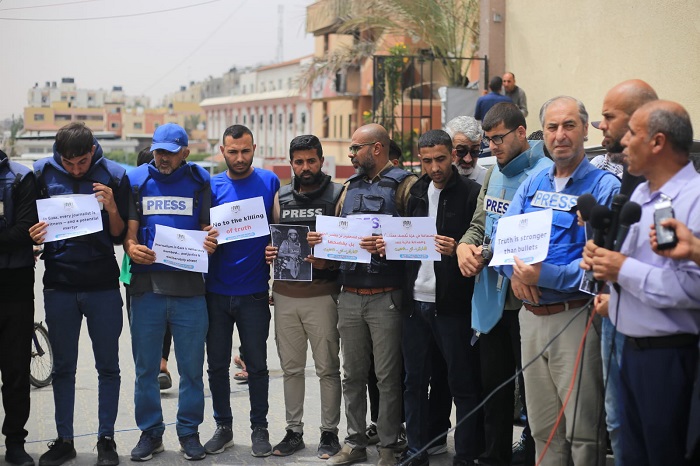JERUSALEM, May 3, 2018 (WAFA) - Children living in the Gaza Strip are experiencing unusually high rates of nightmares and are showing increasing signs of psychosocial deterioration as a result of the violent response to the Gaza protests, just over a month since they began, Norwegian Refugee Council (NRC) said in a press release on Thursday.
It said 56 per cent of Palestinian children surveyed by NRC in March were suffering from traumatic nightmares. When repeating the survey preliminary findings indicate an increase to 60 per cent, a month into the Great Return March demonstrations during which 44 Palestinian protestors have been killed, including 4 children and 2 journalists. More than 6,400 Palestinians have been injured, including at least 530 children, many of whom are left with amputated limbs and permanent disabilities.
Principals from 20 schools interviewed by NRC reported a rise in symptoms of post-traumatic stress in children, including fears, anxiety, stress and nightmares. School principals attributed high levels of post-traumatic stress and low concentration at school to the violent response to the demonstrations. The principals ranked increased psychosocial support in schools as their top need right now.
“The violence children are witnessing in Gaza comes on top of an already worsening situation negatively impacting their mental wellbeing, including living under blockade for the last 11 years and three devastating wars that deprived many children of their close relatives and friends,” said NRC Secretary General Jan Egeland. “Now they are once again faced with the horrifying prospect of losing their loved ones, as they see more and more friends and relatives getting killed and injured.”
NRC provides psychosocial support to children and training for teachers through its Better Learning Program (BLP), developed in partnership with University of Tromsø in Norway. Part of the program involves screening schoolchildren for nightmares, which are one of the most pertinent signs of psychological deterioration. The activities include training children to do breathing exercises and drawing their dreams.
“For the children we work with, the nightmares continue for months and years after the violence that causes them,” said Jon-Håkon Schultz, Professor in Educational Psychology at the University of Tromsø in Norway who has participated in the implementation of the BLP program in Gaza since 2012. He underlines that these nightmares are traumatic nightmares where the child wake up in fear. “The current crisis also brings back previous trauma and is a direct threat to the children’s mental health and their development.”
NRC’s education program coordinator in Gaza, Asa’d Ashour, said: Children having nightmares are growing more impatient in school and unhappier with their lives, and they are unable to concentrate in class.”
Reham Qudaih, 14, was showing remarkable improvements in dealing with the trauma of the 2014 war on Gaza until her father was shot in the leg during the demonstrations. She is now having daily nightmares in which she dreams that her father is dead or had his leg amputated.
Ghadeer, the widow of Jihad Abu Jamous - killed at the demonstrations - told NRC how her four children are waking up crying and screaming at night.
“They feel disconnected from everything and refuse to eat or drink,” Ghadeer said.
Mohammed Ayoub, 14, was getting psychosocial support through NRC’s program in schools when he was killed at the demonstrations.
The sheer force being used against unarmed civilians has also alarmed doctors in Gaza’s hospitals who are receiving increasing numbers of people with bullet wounds, torn muscles and smashed bones.
Egeland said: “We call on all protests to be non-violent. Israel must stop the use of excessive and lethal force against protesters and hold to account those responsible for use of such force.”
The structured survey with children was carried out among 300 school children aged 10 to 12 in three schools in north and eastern Gaza on 26 to 29 March, and again on 22 to 25 April.
The random survey with principals was conducted in 20 schools in April 2018.
Humanitarian agencies in Gaza have identified three areas of intervention that are critical to respond to the urgent needs arising from the ongoing protests in Gaza: providing immediate life-saving healthcare; monitoring, verifying and documenting possible protection violations; and scaling up the provision of mental health and psychological support for people injured or otherwise affected by the events.
Some $5.3 million is urgently required to scale up the immediate response until 31 May, the expected six-week duration of the demonstrations, plus an additional two weeks to ensure immediate response to any affected on 15 May. On 25 April, the Humanitarian Coordinator released $2.2 million available for unforeseen emergencies, to support the three areas of intervention.
M.K.











